 By Pepper Parr
By Pepper Parr
August 7th, 2020
BURLINGTON, ON
If you find yourself driving up or down Guelph Line in the Lowville area you will see the sign: No Quarry. In the battle to preserve the integrity of rural Burlington and to live up to the requirements of being a United Nations Biosphere Reserve a new group has been formed to do battle with Nelson Aggregates, the quarry operator who has an application to expand the existing quarry to the west and to open a new quarry to the south of the existing quarry.
 CORE – Conserving our Rural Ecosystems – is fighting Nelson Aggregate’s application to expand the quarry on the north side of Second Line and a property on the south side of the road which they see as an unacceptable use of our Niagara Escarpment lands.
CORE – Conserving our Rural Ecosystems – is fighting Nelson Aggregate’s application to expand the quarry on the north side of Second Line and a property on the south side of the road which they see as an unacceptable use of our Niagara Escarpment lands.
Gord Pinard is the spokesperson for CORE – the not for profit corporation is opposed to the application for new licenses from the provincial government.
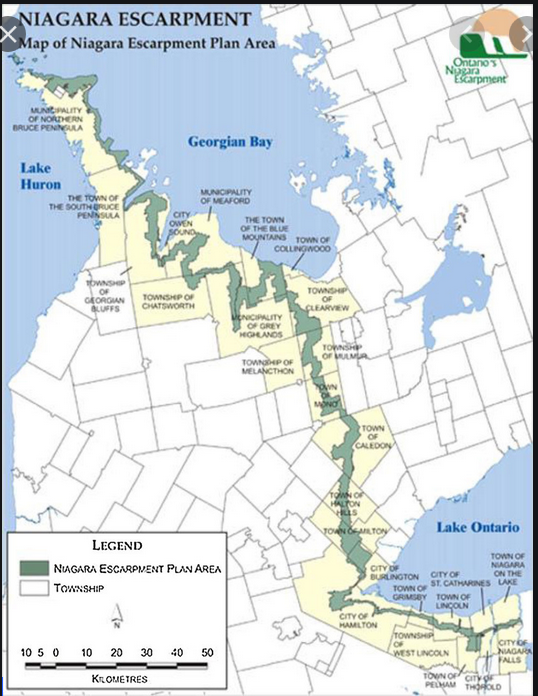
The portion of the biosphere that would be mined is minuscule when one gets a sense as to just how huge the area is.
That application marks the beginning of another battle to save what the area residents refer to as the United Nations Biosphere which 725 km from Lake Ontario (near Niagara Falls) to the tip of the Bruce Peninsula (between Georgian Bay and Lake Huron). The Escarpment corridor crosses two major biomes: boreal needle leaf forests in the north and temperate broadleaf forest in the south.
The designation was given in 1990. The Administrative authorities include Canada, Province of Ontario: eight regions/cities and 21 local municipalities.
Biosphere reserves are ‘learning places for sustainable development’. They are sites for testing interdisciplinary approaches to understanding and managing changes and interactions between social and ecological systems, including conflict prevention and management of biodiversity. They are places that provide local solutions to global challenges. Biosphere reserves include terrestrial, marine and coastal ecosystems. Each site promotes solutions reconciling the conservation of biodiversity with its sustainable use.
The CORE people place great store in the designation and point out that there are 22 licensed quarries in Halton Region alone, covering an area of 3810 acres, producing an average of 7.1 million metric tonnes of aggregate per year. The Region is one of the highest aggregate producers in Ontario.
Pinard points to the eight objectives set out on their web site. They are
1. Oppose new aggregate mineral extraction, and processing of off-site aggregates, and asphalt reprocessing on Burlington escarpment lands.
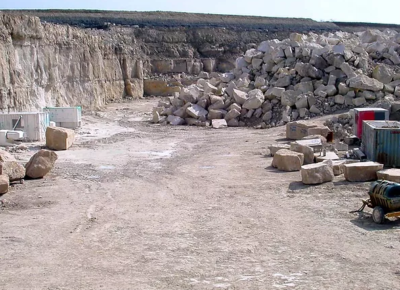
Floor of the quarry – the expectation is that over time water that is currently pumped out will fill the quarry and create a lake.
2. STOP the importation of any fill into Nelson Aggregate’s below-the-water-table Mt. Nemo open-pit quarry mine.
3. Protect the environmentally sensitive biodiversity of the Burlington escarpment woodlands, wetlands, water courses and prime agricultural lands, consistent with our UNESCO World Biosphere Reserve designation.
4. Advocate on behalf of all living organisms, particularly species-at-risk
5. Protect and improve the quality of our air, and the quality and supply of our water.
6. Address concerns associated with HEAVY truck traffic including noise, vibration, pollution, community safety, and road infrastructure
7. Advocate for a comprehensive, science-based assessment of all potential negative impacts, including cumulative impacts, of more aggregate extraction on the Burlington escarpment.
8. Champion our rural community’s quality-of-life, and the safe and peaceful enjoyment of our homes for our families and future generations.
CORE sent a letter to the Joint Administrative Review Tribunal (JART) setting out the why of their opposition to the application which amount to 5000 pages of documentation.
“CORE defines its mission as preserving the ecological integrity of Rural Burlington, and to advocate for healthier communities by protecting our land, air and water. We are concerned that the plans that Nelson Aggregate has to open two new open pit mines are a serious threat to Rural Burlington.
“Our team has reviewed the application documents, submitted to JART by Nelson Aggregate, and we believe the application to be incomplete.
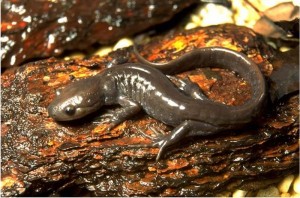
The Jefferson salamander – the deciding factor in the first quarry expansion application.
Species at Risk
“We believe that the Species at Risk studies and assessment are “incomplete”. Many of the threatened, endangered, and of-concern species are known to inhabit the area … Redheaded Woodpecker, Bobolink, Eastern Meadowlark, Eastern Fox-snake, Allegheny Mountain Dusky Salamander, Unisexual Ambystoma salamander, and special concern Eastern Milk-snake, Eastern Newt.
“Curiously, well documented and designated Jefferson Salamanders were not found. Puzzling that terrestrial “pitfall traps” were not used in nearby woodlands (primary salamander habitat) to capture salamanders. Jefferson Salamanders return to their hatching sites, traversing wide terrestrial features from their woodland habitats to get there.
Savanta used only aquatic “minnow traps” in the watercourses. The MNR 2005 salamander study of the south lands used both terrestrial and minnow traps, which captured a number of Jefferson Salamanders, and many more Unisexual Ambystoma salamanders (Jefferson Salamander dependant for breeding).
“Another curiosity is that no amphibian egg masses were found, yet significant amphibian presence was recorded. Only one snake species found? We also find the cavalier attitude on removal of bat habitat disturbing.
“The Species at Risk are designated ‘at risk’ because their numbers have been reduced by development. Finding them requires more time and effort than that taken by Nelson Aggregate’s consultant, Savanta. Concluding that a species is “unlikely present” does not necessarily make it so. They are there. Nelson Aggregate has had eight years to do comprehensive studies.
Hydrogeology and Hydrology
“We believe the Hydrogeology and Hydrology study is “incomplete”. The baseline scenario is compiled from data spanning 2010 to 2019 and various simulations were run, but many did not compare data for all years. There are a number of gaps in the analysis (eg – Baseline Conditions Analysis, Wetland Water Budgets and Drawdowns and Surface Water Flows) where simulations only covered years (2010-2014) which do not include drought years and would likely underestimate the impact of the two new open pit mines.

Much of the Escarpment is unspoiled land – surrounded by water
“There is no attempt to project what the modelling would produce in a worst-case scenario, as may be anticipated with the effects of climate change. Rather, Nelson Aggregate appears to be treating climate change trends as anomalies rather than part of the base data.
“We question the assertion that the groundwaters are isolated from the surface waters. This connectivity would change the water balance significantly. During the last Joint Board Hearing, expert testimony showed groundwater and surface water connectivity.
“Nelson Aggregate’s operation over 75 years has created an ecological offsite dependency that they should have an obligation to deal with. The report gives no timeline for the refilling of the current excavation and how water levels and flows are affected by the returning of water into the excavation. It would be expected that the surrounding area will be deprived of water, because it will now be allowed to refill the hole.
Surface Water
“We have concerns about the surface water quantity and quality that has not been adequately addressed in the Tatham Report and therefore consider this report to be “incomplete”. The background studies have only gone to 2012 with references dating back to 1996, but there is no data of analysis between 2012 and the present.
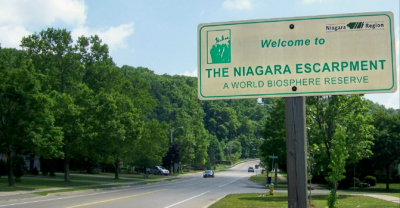
This is part of what a biosphere looks like.
“It is our position that the water entering the watershed should, at the very least meet Ontario EPA standards, as these waterways support not only plant and animal life, but indirectly area wells. We would expect that a “complete” report would properly assess and characterize the discharge water from the site, including the silt in the settling ponds, which may be in the discharge water (as suspended solids). We ask that the discharge waters from the quarry be analyzed for full spectrum chemical content, which must meet Ontario Water Resources Act clean water standards
“Finally, surface water impact from the asphalt plant has not been addressed in the report, which can potentially leach hydrocarbon runoff to the settling ponds, which in turn feed the pumps sustaining the existing watershed.
Air Quality
“We believe that the Air Quality report is “incomplete”. The study is based exclusively on modelling to predict the cumulative impact against air quality standards. The models are fed by emission factors from the EPA (some of which are over 30 years old), background data (which is not available locally for all data requirements) and manufacturers data (which represents a best case and may not be reflective of actual operation). Unfortunately, there is no reported actual air sampling programs to validate the accuracy of the input data and predicted results.
“Although, this is not an exhaustive list of study work that we would consider to be incomplete, we believe it demonstrates significant gaps in application documents submitted that would warrant the JART to deem the application “not complete” as submitted and request Nelson Aggregate to do the necessary work required to complete these very critical studies.”
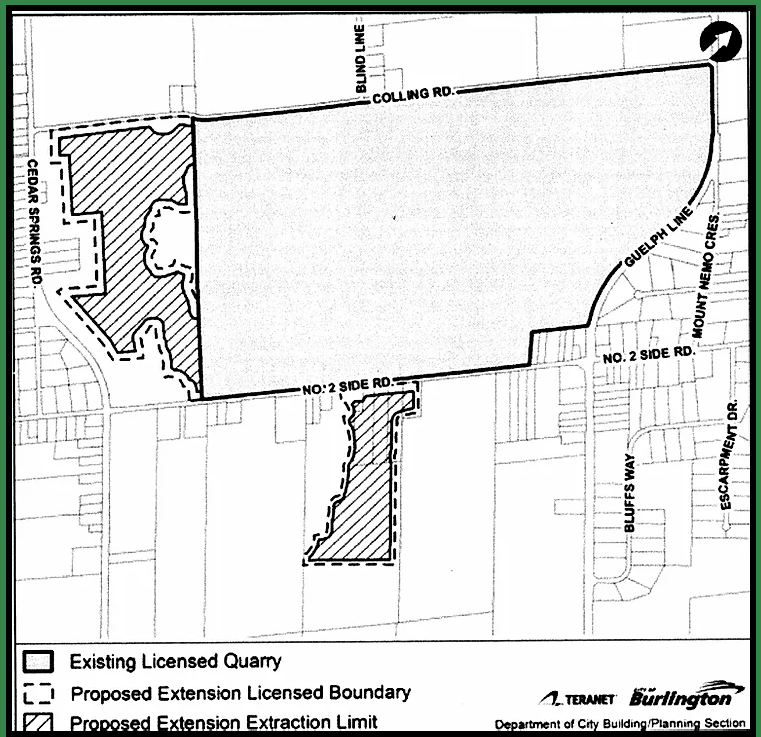
This is the area that will be the subject of a couple of years of debate and argument. The outcome could change the way rural Burlington is eventually used: small farms, some produce and a quiet way of life or part of the land opened up for recreational use by a growing population.
JART recently determined that the Nelson Aggregate application was complete.
The schedule now looks something like this:
Now all studies get circulated for agency and public review
JART will now retain peer reviewers for independent assessment of technical studies. As those reviews take place, there will be technical questions asked of the proponent and technical responses sent back
Once this dialogue winds down, JART prepares a report that summarizes their technical reviews and anything outstanding – this is expected to take about a year
The governments and agencies then use the JART report as the basis for a study of how the project conforms to their own policies
These reports are then brought to councils for consideration. The agency and city review is about a six month process.
In other words – years
The Tribunal that will hear the arguments will work from the documentation each side submits and the expert witnesses that testify.
It is all hard slugging and will take years for decision.
In the meantime the CORE people do the things that have to be done to raise the funds they need. They have an On-line yard sale on the go.
The complete CORE letter to JART can be found HERE.

















